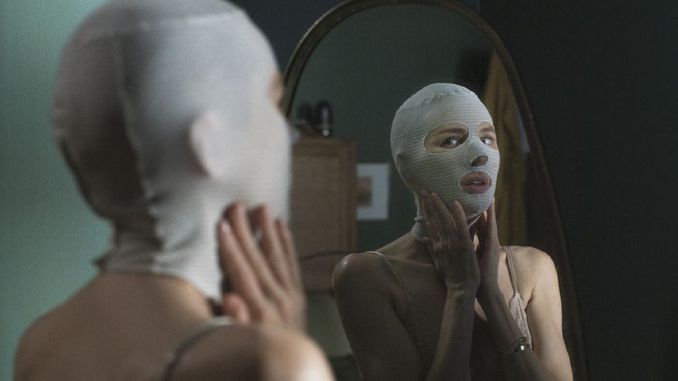Goodnight Mommy Is Every Tepid American Horror Remake

When I heard that an American remake of Goodnight Mommy had been greenlit, I remember my first thoughts being “Oh, no,” and “That probably won’t be good.” In general, when Hollywood sets its sights on redoing a foreign horror film in its own image, that usually means the new film will take away mostly everything that made the original film scary: Atmosphere, tension, restraint. etc. But I like to keep an open mind. As a critic and lover of film, I always want a film to be good, despite the many who believe critics only enjoy tearing a film down. However, Matt Sobel’s overly literal, hand-holding reimaging of Veronika Franz and Severin Fiala’s taut, disturbing psychological German-language horror leaves plenty to be desired. My desires, in particular, while watching at the film’s New York premiere, were that I would rather just be watching the original.
This seems to be the case when it comes to American remakes of non-English language horror films, a trend that once occupied, in particular, a large chunk of time during the early-to-mid 2000s. It followed the success of a number of Asian horror films—Ju-On: The Grudge, Pulse, One Missed Call, A Tale of Two Sisters—that Hollywood felt it could translate to domestic markets. But aside from Gore Verbinski’s pivotal adaptation of Ringu, none could quite capture the hearts and minds of audiences. And especially, not those of critics.
These adaptations went almost entirely extinct into the 2010s, other than a second attempt at The Grudge in 2020, which I think most people have forgotten about (I almost did while writing this piece!). While Hollywood seemingly disavowed tackling Asian horror, it instead set its sporadic sights on the European arthouse. Unsurprisingly, this brought mixed returns. Sweden’s Let the Right One In became the better-than-average Let Me In in 2010, but the attempt at the New French Extremity’s Martyrs in 2015 has been (most likely for its own good) buried under a rug. Luca Guadagnino’s sprawling 2018 reimagining of Dario Argento’s 1977 classic Suspiria, a co-production between Italy and the United States, is something of an outlier. It was an arthouse remake of an English-language, Italian giallo film, which managed to be even less accessible to American audiences than the original. Still, Guadagnino demonstrated, for better and occasionally for worse, the best, simplest mindset when approaching any adaptation: Make it entirely your own.
And here we finally come to Goodnight Mommy, a puzzling adaptation itself. It indulges in the worst impulses of visual language one might think of when considering how an American director would approach adapting a cold, minimalist German art film. It brings very little, if anything at all, to the table. I noted one affectingly eerie shot and an unsettling jump scare. But overall, nuance is forgone in favor of making sure the audience always understands exactly what is going on, which sacrifices the original’s far more effective and sophisticated restraint, uncanny tone and negligible reliance on dialogue. Here, lead twins Elias and Lucas (Cameron and Nicholas Crovetti) are chatty to the point that, as is often the case with child actors, the brothers’ acting abilities are mostly grating. Maybe it’s that the original’s Lukas and Elias Schwarz are better actors. Or, maybe it’s that the Austrian film doesn’t give them as many opportunities to talk, instead allowing the children space to emote physically.
-

-

-

-

-

-

-

-

-

-

-

-

-

-

-

-

-

-

-

-

-

-

-

-

-

-

-

-

-

-

-

-

-

-

-

-

-

-

-

-








































